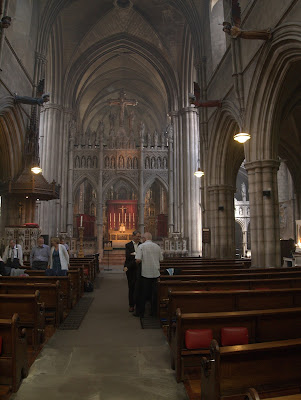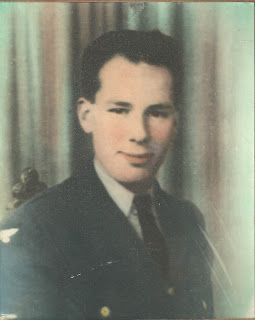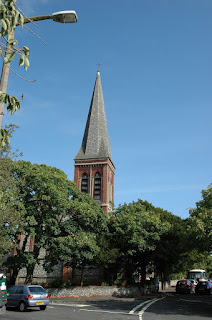Low notes
The week after Easter is often called "Low" Sunday. A sermon I heard once (in Parkend church) wondered if it referred to the number in the congregation, and surmised that those seen on Easter Day and then not again til Christmas were having Holy Car-munion (ouch) at home, washing their Fords and Vauxhalls.
 For those involved with Cantores Vagantes, it's the weekend jaunt to some cathedral or other to sing the weekend services. Some hundreds of miles and to the north-east of London is the town of St Edmundsbury, now usuallly referred to as Bury St Edmunds. I was last there in 2010 on my 51st birthday, which is another story altogether, and the cathedral had scaffolding up in the chancel whilst they installed the new Harrison & Harrison organ (rather than pinch their excellent photo, I thought a link better). I didn't think then I would be playing it for three services.
For those involved with Cantores Vagantes, it's the weekend jaunt to some cathedral or other to sing the weekend services. Some hundreds of miles and to the north-east of London is the town of St Edmundsbury, now usuallly referred to as Bury St Edmunds. I was last there in 2010 on my 51st birthday, which is another story altogether, and the cathedral had scaffolding up in the chancel whilst they installed the new Harrison & Harrison organ (rather than pinch their excellent photo, I thought a link better). I didn't think then I would be playing it for three services.Whilst waiting for the choir to assemble, I took a quick pic of the east window from an unusual angle.
I found the "Manuals I & 2 exchange" very useful. It meant that the Choir stops (which are effectively the Great organ for services in the choir) and pistons are played from the 2nd manual, the Great therefore plays on the Choir manual. Confusing at first, by the end of the weekend I had got into the stride of it, and found it very useful. It helps as the Great speaks down the nave and drowns the singers for anyone listening there. Also the Choir organ is much more immediate for the singers, not bouncing off the west transept wall before reaching them.
 Of course, the crowning glory of the cathedral is the tower lantern, its ceiling and the decoration of the new organ case to match. The tower is superb. This picture taken from the ruins of the old abbey. The stone 'egg' on the right is all that's left of one of the nave pillars.
Of course, the crowning glory of the cathedral is the tower lantern, its ceiling and the decoration of the new organ case to match. The tower is superb. This picture taken from the ruins of the old abbey. The stone 'egg' on the right is all that's left of one of the nave pillars.The organ strongly reminded me of that in Guildford Cathedral, a large romantic Rushworth & Dreaper (at the moment) with a Positive section near the choir. The BSE reeds are large in comparison to the mixturework as heard from the console. There's not a trace of 'chiff' or 'cough' on any pipe, the console is superb and so easy to play, and the overall finish is the 'Rolls-Royce' kind of finish you expect from Harrison's. But to me it sounded like it had been made in 1930, not 2010. It's certainly not repro 1910 Hill, it sounds like a Harrison, but I always preferred Walker and Willis to Harrison. I would not be very surprised to find that the No 1 Open Diapason was leathered. With the caveat that you can't use much of the Great to accompany, it's a good accompanimental instrument. There was a warning in the exceedingly comprehensive notes from the organist to visiting organists that you shouldn't use the No 1 in baroque music. Well, I grew up hearing people born in the 1900s playing on instruments made at the same time, both in their prime. No 1s were used, and Tubas added to final chords. There was a dichotomy as I was also listening to the Royal Festival Hall organ, in its original acoustic surroundings and for which it was voiced. The younger and foreign organists playing there used 'straight-line' choruses, one stop per pitch. Both are equally valid, you choose your registration to suit the organ upon which you are playing. So, even though Kevin Bowyer has recorded complete Bach on appropriate organs, he has also recorded one at St Mary Redcliffe, Bristol, another Harrison. IMHO, not as polished and subtle as some for registration, a worthwhile listen.
You've already guessed where the paragraph above was going, yes, the final voluntary was Bach (the "St Anne" fugue), yes, the No 1 was used in the final section, the final pedal entry was marked by cannon-fire (the 32' Trombone) and the Tuba - a very splendid one - came on for the final chord. It got a round of applause, so it can't have been all that bad. I think it was a fitting end to the Octave.
Happy Easter!



Comments
Post a Comment